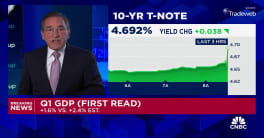The National Association of Realtors today released Existing Home Sales data for December 2010
Existing Home Sales report on the number of completed real estate sales transactions on single-family homes, townhomes, condominiums and co-ops. The methodology in calculating existing-home sales statistics is really quite simple. Each month the National Association of Realtor® receives data on existing-home sales from local associations/boards and multiple listing services (MLS) nationwide. The monthly EHS economic indicator is based on a representative sample of 160 Boards/MLSs. NAR captures 30-40% of all existing-home sale transactions with its monthly survey.
HERE is the methodology for the data collection
Excerpts from the Release...
Existing-home sales rose sharply in December, when sales increased for the fifth time in the past six months, according to the National Association of REALTORS®.
Existing-home sales, which are completed transactions that include single-family, townhomes, condominiums and co-ops, rose 12.3 percent to a seasonally adjusted annual rate of 5.28 million in December from an upwardly revised 4.70 million in November, but remain 2.9 percent below the 5.44 million pace in December 2009.
Single-family home sales jumped 11.8 percent to a seasonally adjusted annual rate of 4.64 million in December from 4.15 million in November, but are 2.5 percent below the 4.76 million level in December 2009. Existing condominium and co-op sales surged 16.4 percent to a seasonally adjusted annual rate of 640,000 in December from 550,000 in November, but remain 5.2 percent below the 675,000-unit pace one year ago.
Regionally, existing-home sales in the Northeast jumped 13.0 percent to an annual pace of 870,000 in December but are 5.4 percent below December 2009.
Existing-home sales in the Midwest rose 11.0 percent in December to a
level of 1.11 million but are 4.3 percent below a year ago.
In the South, existing-home sales increased 10.1 percent to an annual
pace of 1.97 million in December but are 2.5 percent below December
2009.
Existing-home sales in the West surged 16.7 percent to an annual level
of 1.33 million in December but remain 1.5 percent below December 2009.
The national median existing-home price for all housing types was $168,800 in December, which is 1.0 percent below December 2009. The median existing single-family home price was $169,300 in December, down 0.2 percent from a year ago. The median existing condo price was $165,000 in December, which is 7.4 percent below December 2009.
Distressed homes rose to a 36 percent market share in December from 33 percent in November, and 32 percent in December 2009.
The median price in the Northeast was $237,300, which is 1.4 percent below a year ago.
The median price in the Midwest was $139,700, up 3.3 percent from December 2009.
The median price in the South was $148,400, unchanged from a year ago.
The median price in the West was $204,000, down 5.6 percent from a year ago.
Total housing inventory at the end of December fell 4.2 percent to 3.56 million existing homes available for sale, which represents an 8.1-month supply at the current sales pace, down from a 9.5-month supply in November.
Investors accounted for 20 percent of transactions in December, up from 19 percent in November and 15 percent in December 2009; the balance of sales were to repeat buyers. All-cash sales were at 29 percent in December, compared with 31 percent in November, but up from 22 percent a year ago. “All-cash sales have been consistently high at about 30 percent of the market over the past six months,” Yun said.
A parallel NAR practitioner survey shows first-time buyers purchased 33
percent of homes in December, up from 32 percent in November, but are
below a 43 percent share in December 2009.
NAR President Ron Phipps, broker-president of Phipps Realty in Warwick, R.I., said buyers are responding to very good affordability conditions despite tight mortgage credit. “Historically low mortgage interest rates, stable home prices, and pent-up demand are drawing home buyers into the market,” Phipps said. “Recent home buyers have been successful with very low default rates, given the outstanding performance for loans originated in 2009 and 2010.”
Lawrence Yun, NAR chief economist, said sales
are on an uptrend. “December was a good finish to 2010, when sales
fluctuate more than normal. The pattern over the past six months is
clearly showing a recovery,” he said. “The December pace is near the
volume we’re expecting for 2011, so the market is getting much closer to
an adequate, sustainable level. The recovery will likely continue as
job growth gains momentum and rising rents encourage more renters into
ownership while exceptional affordability conditions remain.”
“The modest rise in distressed sales, which typically are discounted 10
to 15 percent relative to traditional homes, dampened the median price
in December, but the flat price trend continues,” Yun explained.







